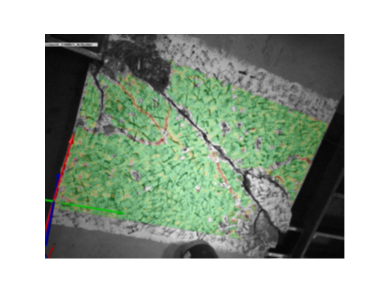Project idea and objective
The number of existing concrete bridges, whose design lifetime is soon to be exceeded or where a capacity to carry heavier traffic is desired, is increasing rapidly. When assessing whether the bridges need to be strengthened, replaced, or can be kept in service, it is important to have accurate and well-documented models. As the load-carrying capacity of many of these bridges is governed by a combination of the out-of-plane (transverse) shear and in-plane (longitudinal) shear, a model for combined shear is especially important. However, combined shear has received very little research attention. As a consequence, the approaches in current design guidelines are unsophisticated without foundation in research or experimental evidence and provide a conservative estimate of the shear capacity. This conservatism leads to bridges being unnecessarily replaced or strengthened, resulting in significant CO₂ emissions and excessive usage of natural resources. Therefore, this project aims to establish an accurate model to determine the capacity for the combination of in-plane and out-of-plane shear. Furthermore, the project aims to derive an effective strengthening strategy for concrete bridges subjected to combined shear.
The project will include a large experimental programme where the failure mechanisms and crack kinematics will be investigated in specimens where important design parameters are varied to determine their influence.
Based on the experimental results and detailed analysis of the observed failure mechanisms an analytical shear model will be established using the upper bound theorem of the plasticity theory.
Participants SDU
Project Leader; Henrik Brøner Jørgensen, University of Southern Denmark
Industrial PhD Candidate: Jens Skovgaard Larsen, University of Southern Denmark and COWI A/S
Participating companies
COWI A/S
Financing: Innovation Fund Denmark and Cowifonden.
Period: February 2023 – August 2026
Photos


